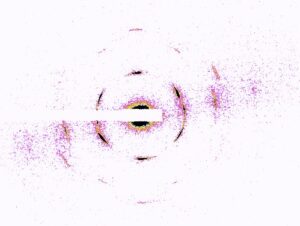Wigner crystals, first predicted in 1934 for electrons, are ordered structures that emerge when charged objects arrange themselves into a crystalline lattice due to long-range electrostatic repulsions. In this study, researchers from the Centre de Recherche Paul-Pascal in Pessac and the University of Venice investigate a similar phenomenon in elongated colloidal particles. At very low salt and particle concentrations, these rods spontaneously form a crystalline structure, replacing the liquid-crystalline phases usually observed. This transition, observed experimentally and supported by simulations, results from a balance between minimizing electrostatic repulsions and maximizing entropy associated with particle fluctuations.
This discovery is significant because it demonstrates how long-range electrostatic interactions can deeply influence the organization of (nano)particles. It opens up new avenues for the design of self-assembled materials and enhances our understanding of self-organization phenomena.
Reference :
Unveiling Crystalline Order from Glassy Behavior of Charged Rods at Very Low Salt Concentration
- Anop, L. Dal Compare, F. Nallet, A. Giacometti, E. Grelet*
Phys. Rev. Lett. 134, 118101 (2025).
Contact :
Eric Grelet
Centre de Recherche Paul-Pascal, UMR5031
CNRS – Université de Bordeaux
115 Avenue Albert Schweitzer
33600 Pessac, France
Tel: +33 5 56 84 56 13

